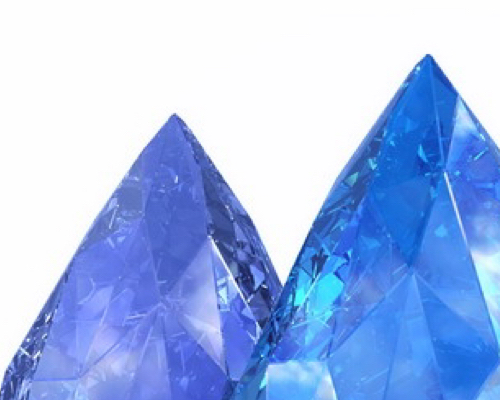Popular science about sapphire
Sapphire is the general name for corundum gemstones of other colors except red rubies. The main component is aluminum oxide (Al2O3). Blue sapphire is caused by a small amount of titanium (Ti) and iron (Fe) impurities mixed in it; the color of sapphire can be pink, yellow, green, white, or even multiple colors in the same stone.
Sapphires are produced in Changle, Shandong, China, Thailand, Sri Lanka, Madagascar, Laos, and Cambodia. The rarest of them should be the sapphires in Kashmir, and Myanmar is the place that produces the most high-quality sapphires today.
The biggest feature of sapphire is its uneven color, with straight color bands and growth lines of different shades arranged on parallel hexagonal cylinders. Poly-flake twin crystals develop, and shutter-type twin crystal patterns are common. The cracks are mostly split along the twin crystal planes. Sapphires from different origins in the world have strong dichroism. In addition to the above common characteristics, sapphires from different origins also have their own characteristics. In the 1980s, many sapphire deposits were discovered in the basalt along the eastern coast of China.
A blue star gem weighing 1,404.49 carats was discovered in Sri Lanka and is worth at least US$100 million.
The English name of sapphire is Sapphire, which comes from the Latin Spphins, which means blue; it belongs to the corundum family of minerals and has a trigonal crystal system. In the gem industry, all kinds of gem-grade corundum other than rubies are called sapphires. Sapphires and rubies, emeralds, emeralds, bodhi tourmalines, tanzanites, etc. all belong to the genus of colored gemstones.
Because corundum contains trace elements such as iron (Fe) and titanium (Ti), it appears in colors such as blue, sky blue, and light blue. Among them, bright sky blue is the best.
The mineral name of sapphire is corundum, which belongs to the corundum family of minerals. In fact, except for the red gem-grade corundum in nature, which is called ruby, the other colors such as blue, light blue, green, yellow, gray, colorless, etc. are all called sapphire. The chemical composition of sapphire (AL2O3) is mainly Fe, Ti, and color.
The composition of sapphire is aluminum oxide, which is blue due to the trace elements titanium (Ti4+) or iron (Fe2+). It belongs to the trigonal crystal system. The crystal shape is often cylindrical, short columnar, plate-shaped, etc., and the geometry is mostly granular or dense block. Transparent to translucent, glassy luster. The refractive index is 1.76-1.77, the birefringence is 0.008, and the dichroism is strong. Heterogeneous body. Sometimes there is a special optical effect – starlight effect. The hardness is 9 and the density is 3.95-4.1 g/cubic centimeter. No cleavage, cleavage development.
When it is cut in a cabochon shape and the interior is rich in three groups of inclusions arranged parallel and directional to the bottom surface, it can produce beautiful six-ray starlight, which is called “star sapphire”



